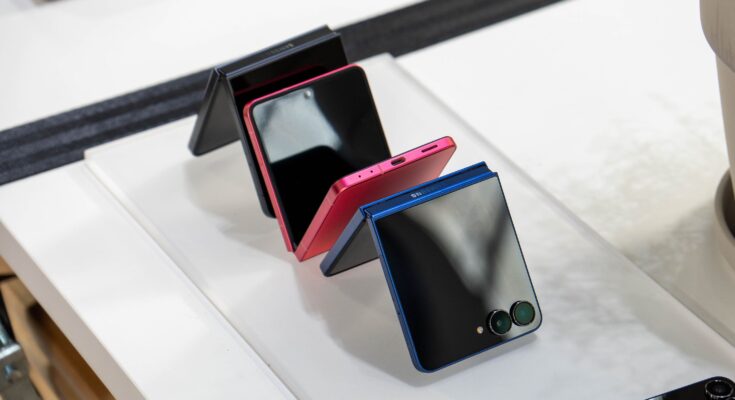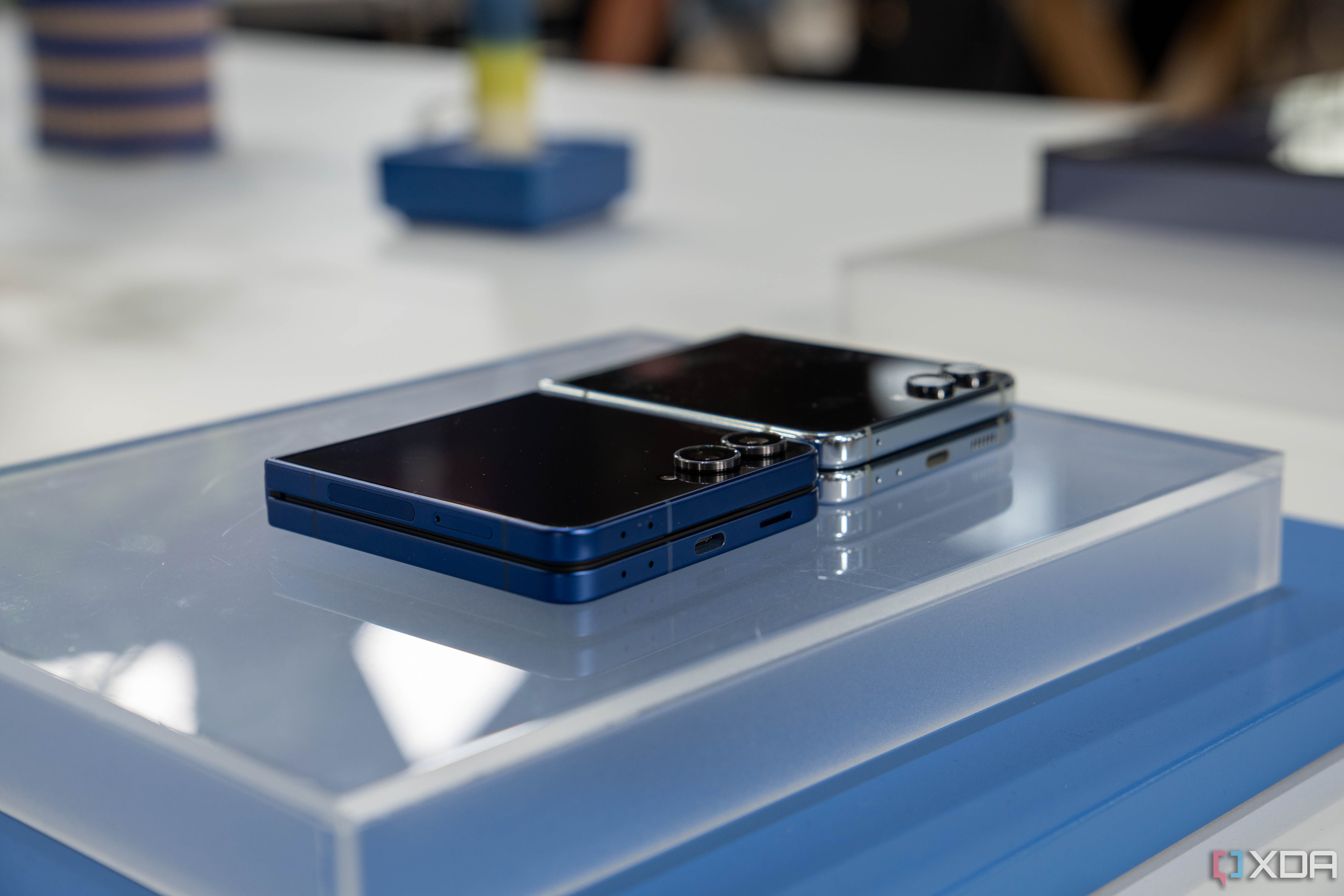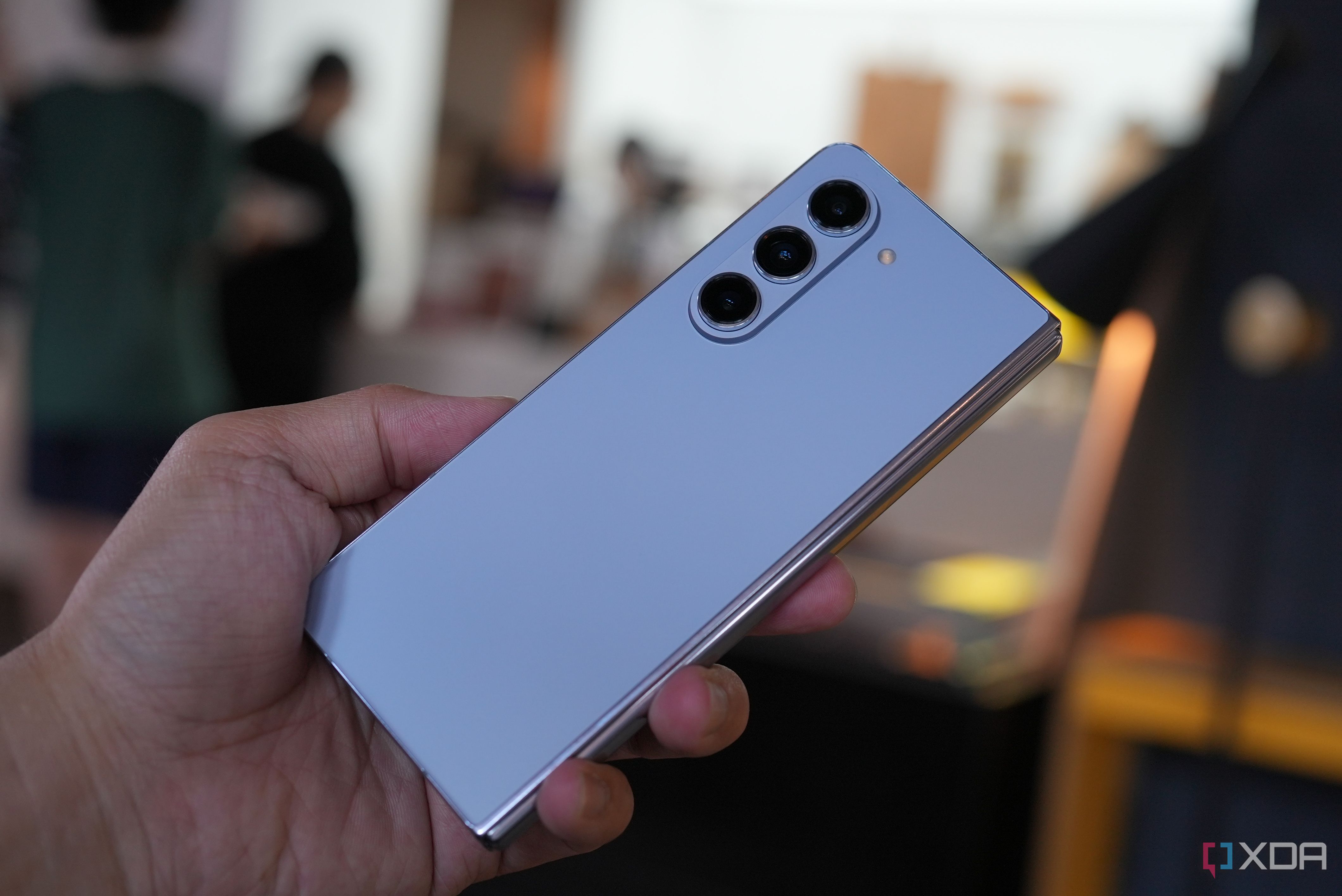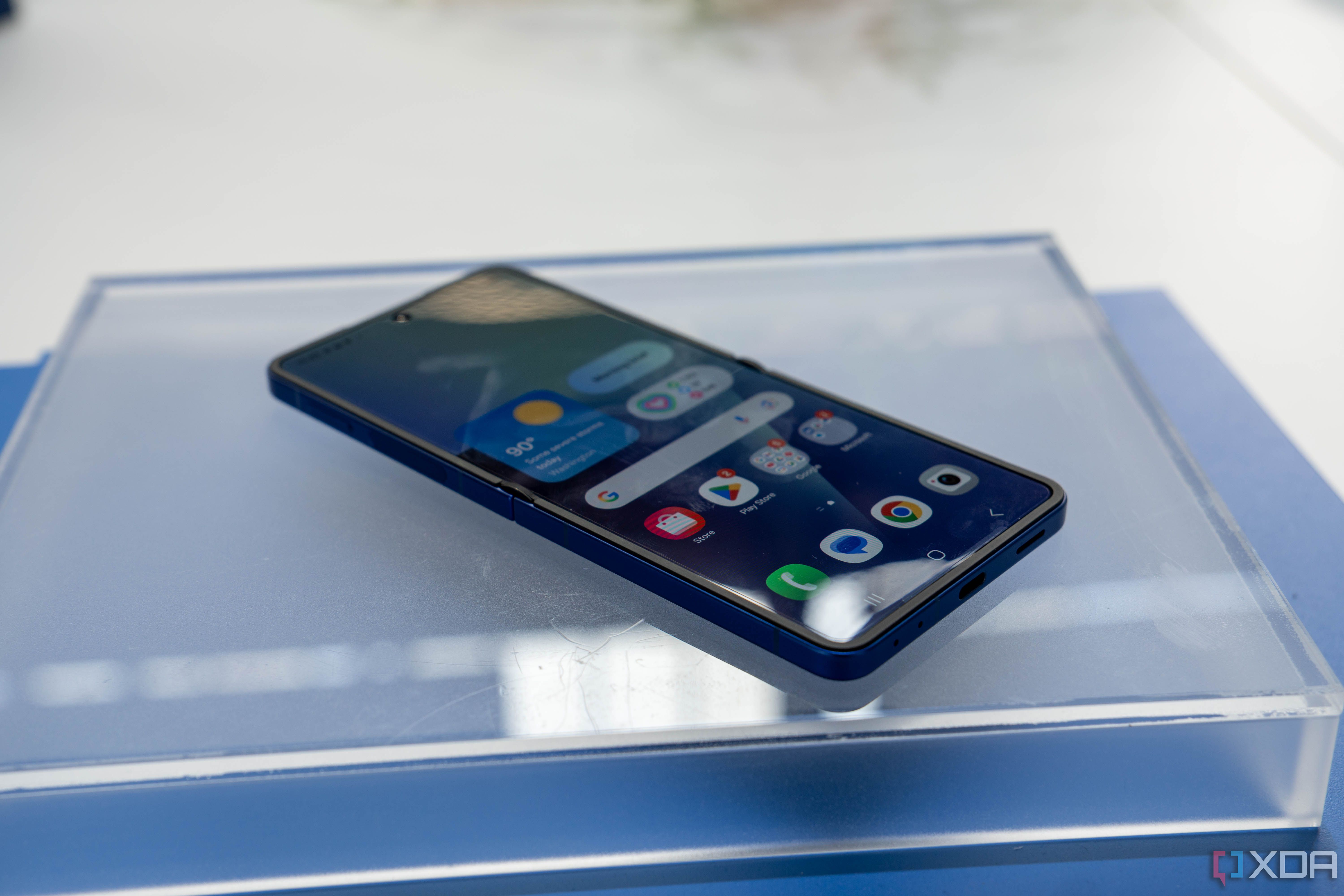I’ve always liked the idea of folding phones, but I’ve never really understood the appeal of the flip form factor. With the new Galaxy Z Flip 7, I was hoping Samsung would finally give me a reason to change my mind. Maybe this would be the year the hardware really stepped up and made the flip form factor feel more than just a cool idea.
But after seeing what’s new, I’m not sure anything has really shifted. There are definitely some improvements, but they’re not quite enough to make the flip phone experience click for me just yet.
What real advantage do flip phones offer anyway?
I just don’t see how this form factor makes anything better
Compared to the Z Fold series, which actually gives me a mini tablet-sized screen to work on, I just don’t see any real utility behind flip phones. There is no productivity boost, no unique experience. It just feels like a regular phone that folds in half for no real reason.
The cover screen is honestly not that useful either. Even for basic stuff like checking notifications, there is virtually no difference between glancing at a 6.9-inch slab phone or the bigger 4.1-inch cover screen on the Galaxy Z Flip 7. Both are equally distracting and require the same kind of attention. The flip form factor does not really change the way I use my phone at all.
Sure, there are a handful of apps optimized for the smaller screen, and yes, I could technically force any app to run on it if I really wanted to. But every time I try to use the cover screen, I just feel like I am making my own life harder. I always end up opening the phone and using the inner screen anyway.
I get the argument that flip phones are more pocketable, but I use a Galaxy S24 Ultra as my daily, and that phone is huge. I have never had trouble slipping it into a pocket. Maybe if you wear tighter pants or have smaller pockets, it might make a difference, but honestly, most 6.2-inch phones fit just fine.
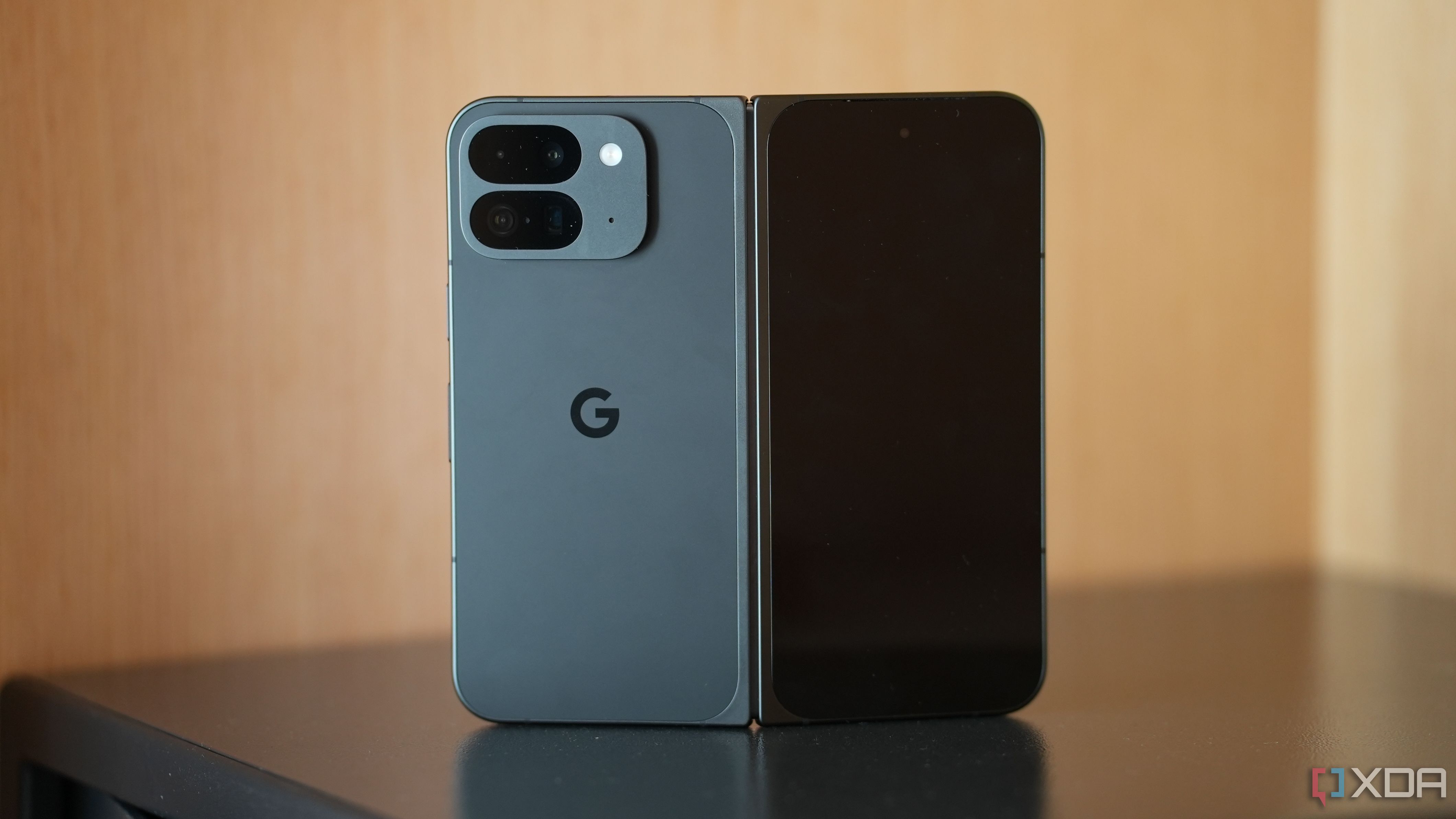
Related
Google Pixel 9 Pro Fold review: So much better than first one, but is that enough?
The Google Pixel 9 Pro Fold is much better than the first Pixel Fold, but I’m not so sure it’s better than existing foldables even within US market
In trying to fit everything into this form factor, everything else gets worse
The compromises stack up quickly
In the pursuit of making this compact flip design work, it feels like every other part of the phone takes a hit, and in the most frustrating ways possible.
First off, the cameras are just plain underwhelming. The Galaxy Z Flip 7 uses pretty much the same setup as last year, which was already average at best. In comparison, Samsung’s regular Galaxy S25 and S25 Plus include an extra telephoto lens while still costing less. That would be easier to overlook if the Flip was significantly cheaper, but it isn’t. It usually costs the same or even more. And that’s the irony; the main advantage of the flip design is being able to use the rear cameras for selfies, but that benefit doesn’t mean much when those cameras are mid-range at best.
I also don’t expect the battery life to be amazing, but I have to give Samsung credit for bumping the Z Flip 7’s battery from 4,000mAh to 4,300mAh. That actually puts it ahead of the regular Galaxy S25 this time, which is impressive. It still might not be enough for heavy users, but it’s definitely a step in the right direction, especially since battery life has always been one of my biggest reasons for avoiding flip phones.
The Galaxy Z Flip 7 uses the Exynos 2500, but like previous flip phones, there just isn’t enough space inside to cool it properly. As a result, it tends to perform noticeably worse than a regular slab phone with the same chipset, and I don’t expect it to be any different this time around. In trying to squeeze flagship specs into this compact shell, the end result feels like a phone that is just worse across the board.
For this price, you could just get a better phone
You are paying more for less
The Z Flip series has always been positioned as a premium product, but every year I find myself asking the same question: why does this cost the same as a full-fledged flagship when it clearly comes with compromises?
The Galaxy Z Flip 7 starts at $1099, which is pretty much in the ballpark of any other top-tier flagship. And those phones are better at everything. You get better cameras, bigger batteries, better cooling, faster charging, higher-quality displays, the list goes on. The Flip’s only real trick is that it folds in half vertically.
Thankfully, there’s also a more affordable option this year with the Z Flip 7 FE starting at $899. But to be honest, it feels like little more than a rebranded Z Flip 6 from last year, and even then, the Moto Razr series still comes in at a lower price.
That might appeal to people who want a more compact device or something that looks different, but if we are being honest, the value is just not there. You are giving up so much and still paying flagship-level money. And all for a hinge? If the only unique thing your phone does is fold, but it under-delivers on everything else, then what are you really paying for?
We need more competition
The OnePlus Open was a great example of how competition can shake things up. It was polished, fast, and brought serious heat to Samsung’s Fold series in the US. Unfortunately, when it comes to flip phones, there just is not much of that same energy.
Right now, Samsung’s only real competition in the US flip phone market is the Motorola Razr Ultra. Even the regular Razr has steadily improved over time and undercuts Samsung on price, starting at just $700. That might be one of the reasons we’re seeing the more affordable Z Flip 7 FE, which is a good move, but it’s still not enough.
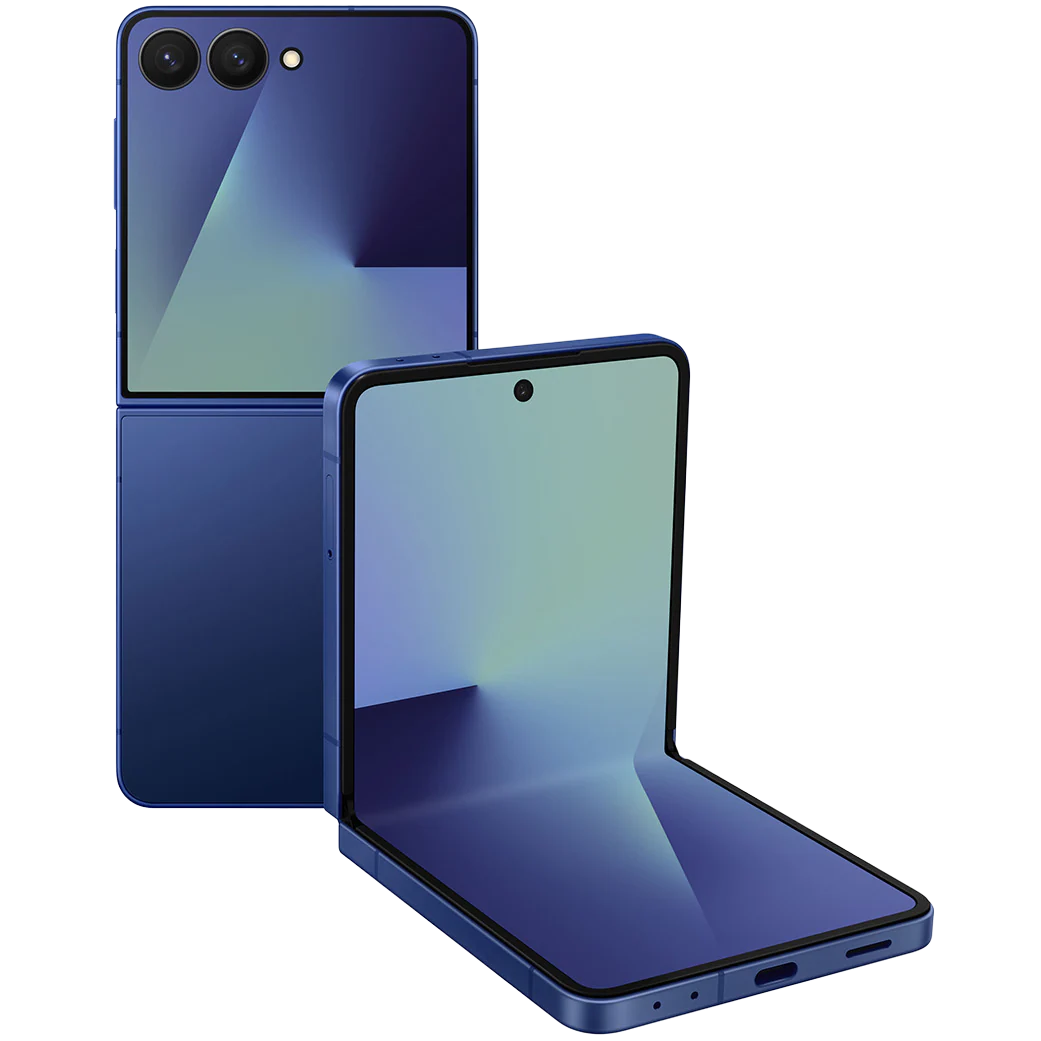
- SoC
-
Samsung Exynos 2500
- RAM
-
12GB
- Storage
-
256GB / 512GB
- Battery
-
4,300mAh (typical) dual battery
- Operating System
-
Android 16 / One UI 8
- Front camera
-
10MP Selfie Camera F2.2, Pixel size: 1.12μm, FOV: 85˚
The Samsung Galaxy Z Flip 7 features a new 4.1-inch edge-to-edge cover display and a larger battery.
